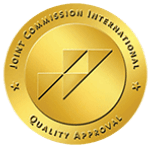When you’re recovering from alcohol and drug abuse disorder, you’re more vulnerable to relapses. Finding a substance abuse recovery center with an anxiety treatment program Tacoma, WA clients trust can help you retrain your brain to be an ally in your fight to stay clean.
What Is Cognitive Restructuring Therapy?
Cognitive restructuring therapy developed from Cognitive Behavioral Therapy, which is a psychotherapy treatment for substance abuse disorder recovery. CBT helps you become aware of your thoughts, behaviors, and feelings so that you can better control them. In cognitive restructuring therapy, you learn to identify, challenge, and change the beliefs that stress you out and lead to unhealthy behavior. You can think of it as rewiring your brain.
Five Steps of Cognitive Restructuring
Here’s how the five steps of cognitive restructuring therapy work. Your experience will be tailored by your Bayview therapist to overcome your self-defeating thoughts. You can do this — and you’re not alone.
Step 1: Calm Yourself Down
People might tell you that you can’t control your thoughts and feelings. That’s not true. It’s not easy, but you can learn to push thoughts aside and control them. For example, if you’re upset by thoughts that cross your mind, it’s healthy to explore them. Mindfulness meditation therapy helps you calm down so that you can work through those stressful thoughts. Meditation and breathing is the first step to changing those thoughts.
Step 2: Identify the Triggering Situation
Describe the situation or feelings that triggered the negative thoughts.
Step 3: Analyze Your Mood
Even if you don’t like to write, this step is essential to getting at the heart of what’s bothering you. Write down your moods, which are the core emotions, not the thoughts that come with a particular situation. Here’s how to tell the difference:
- You can describe feelings in one word.
- Thoughts take phrases, whole sentences, or paragraphs to describe.
For example, “He embarrassed me in front of my coworkers” is a thought, and the accompanying moods may include anger, frustration, and humiliation.
Step 4: Identify Your Automatic Thoughts
Next, you’re ready to write it down. Here, you identify your first reactions, also known as automatic thoughts. This lets you learn the types of situations that trigger negative moods and feelings.
Building on the example above, some thoughts might include:
“Maybe I am a terrible analyst/worker/person.”
“What have I failed to consider?”
“He’s so rude!”
“Why doesn’t anyone like me?”
“But, I was right.”
“I want to quit.”
Distressing thoughts, called “hot thoughts,” include “Why doesn’t anyone like me?” and “Maybe I am a terrible analyst/worker/person.”
Step 5: Analyze the Situation Objectively
This is the step that helps you move forward. Identify evidence that supports or debunks these automatic thoughts. Continuing with the same example, here are some observations you might make.
“The meeting continued, but my opinion wasn’t considered.”
“He identified an issue that I missed and need to explore more.”
So, you may be wondering what the point is. By looking at the entire situation and writing down the evidence, you can determine whether your thoughts were valid. When you want to dispute an idea, these questions can help you stay objective and focused:
- Were my thoughts accurate?
- What objective evidence supports my view?
- What’s the worst thing that can happen if I am incorrect?
- How can I change what happened?
- How does this event compare to the worst thing that can happen to me?
It’s important to note that processing a situation doesn’t mean you have to accept bad treatment. It just gives you a tool to deal with it internally so that you can handle the situation calmly and without self-damaging negativity.
How Helpful Thinking Helps
Cognitive restructuring is challenging to learn. It requires that you give voice to moods and thoughts that may be fleeting. It’s not easy to recognize your own mistakes without feeling bad about yourself. A neutral third party can critique your efforts and help you chart a road to success.
Cognitive restructuring therapy is like mental weightlifting. You develop mental muscles and new ways of thinking. Practicing this exercise can be time-consuming. However, over time, just like weightlifting, the results become noticeable to you and those around you. Eventually, you can correct your dysfunctional thinking in real-time and prevent actions that may threaten your recovery.
Bayview Recovery Center in Tacoma, WA
Cognitive restructuring is a powerful tool that you can develop inside and outside of your regular therapy. It’s an essential step in lifelong recovery. If you or someone you love is ready to enter addiction treatment center in Tacoma, WA, contact Bayview Recovery Center at 855.478.3650 today.

 Dr. Dave Cundiff, MD, MPH (Medical Reviewer)
Dr. Dave Cundiff, MD, MPH (Medical Reviewer)






